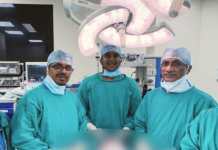London, Jan 23 (IANS) Spanish researchers are developing new sensors that can combat the proliferation of bacteria in very high-humidity environments.
Humidity is one of the most controlled and most monitored aspects nowadays owing to its great importance in a whole range of industrial processes or in areas such as food monitoring, air quality, biomedicine or chemistry.
“Yet, problems remain in terms of measuring and monitoring it in specific situations such as environments where the humidity level is very high,” said engineers Aitor Urrutia from Universidad PAblica de Navarra (UPNA) in Spain in a university statement.
The proliferation of bacteria in such environments where the humidity is very high is common and this leads to the formation of “biofilms” which are ecosystems made up of these microorganisms attached to a surface.
This leads to the problem known as biofouling which causes “the deterioration of many materials and devices, affects their performance and cuts their service lifetimes”.
“Right now, the costs arising out of biofouling are very high mainly because of the maintenance work or replacement of equipment,” Urrutia added.
Urrutia wrote about building new humidity sensors that would have antibacterial properties for applications that function in environments where the humidity is high and which are conducive to bacterial growth, and thus prevent the creation of biofilms and overcome biofouling.
To develop humidity sensors, Urrutia based himself on the combination of the latest advances in nanotechnology over new fibre optic configurations.
“That way, the new sensors developed have longer service lifetimes and perform better,” he noted.
The new humidity sensors developed could be integrated into a wide variety of sectors, such as health centres and hospitals to monitor human respiration, among other applications.













